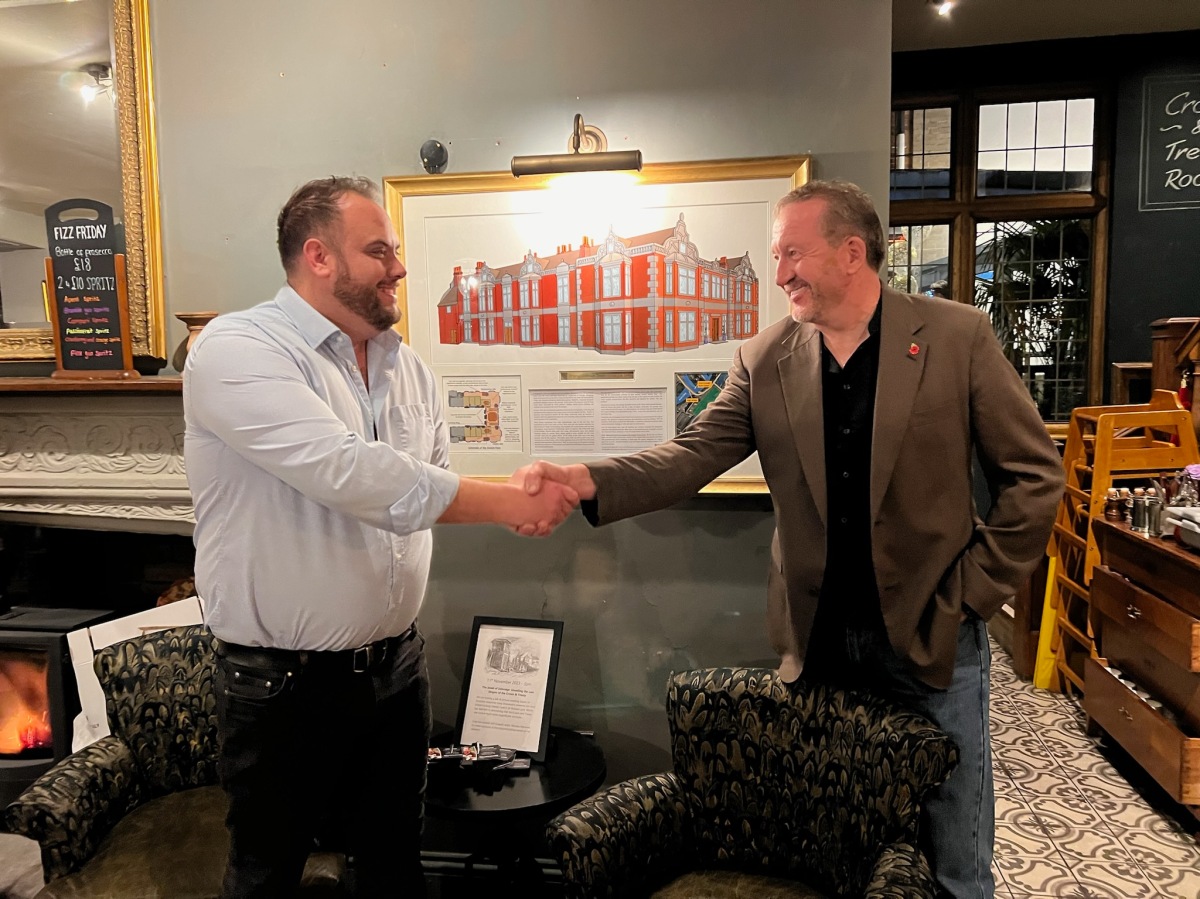We landed back home yesterday from our trip to Uxbridge, which lies on the western outskirts of London. We are grateful that everything came out so well–much better than we might have expected. The talks and the unveiling were well attended, and we found some important new historical resources available only at the local archives.
But our fondest takeaway was some of the people we met while we were in Uxbridge. More than once I had the disorienting experience of spending time in the easy company of folks who felt like old friends–though we’d only just met. And more than once, I found myself very much admiring their own splendid works. To be so welcomed and engaged by such quality people was a joy. It made our trip truly wonderful.
At Our Lady of Lourdes and St. Michael
The day after we landed, we attended Sunday Mass at Our Lady of Lourdes and St. Michael Catholic Church. The parish priest, Fr. Nick Schofield, would be our host for the first talk, scheduled for the following evening in the church hall. Mary and I agreed the feel of this church was “quietly vibrant”. The congregation was of all ages, including lots of young children. Fr. Nick’s sermon was about bereavement and a perspective on living your life “while it’s fizzy”. It was brilliant! He also pointed something out I’ve never been able to put my finger on. He said part of what is so hard about losing someone you are close to is that you also lose who you were to them…
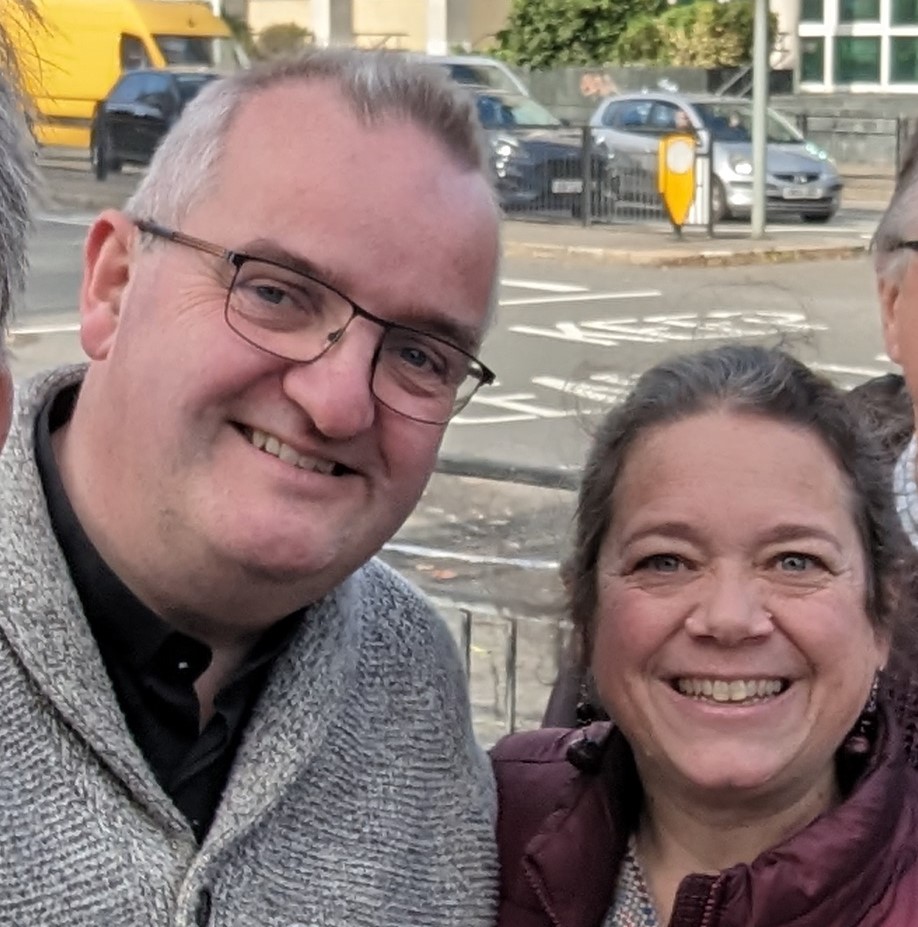

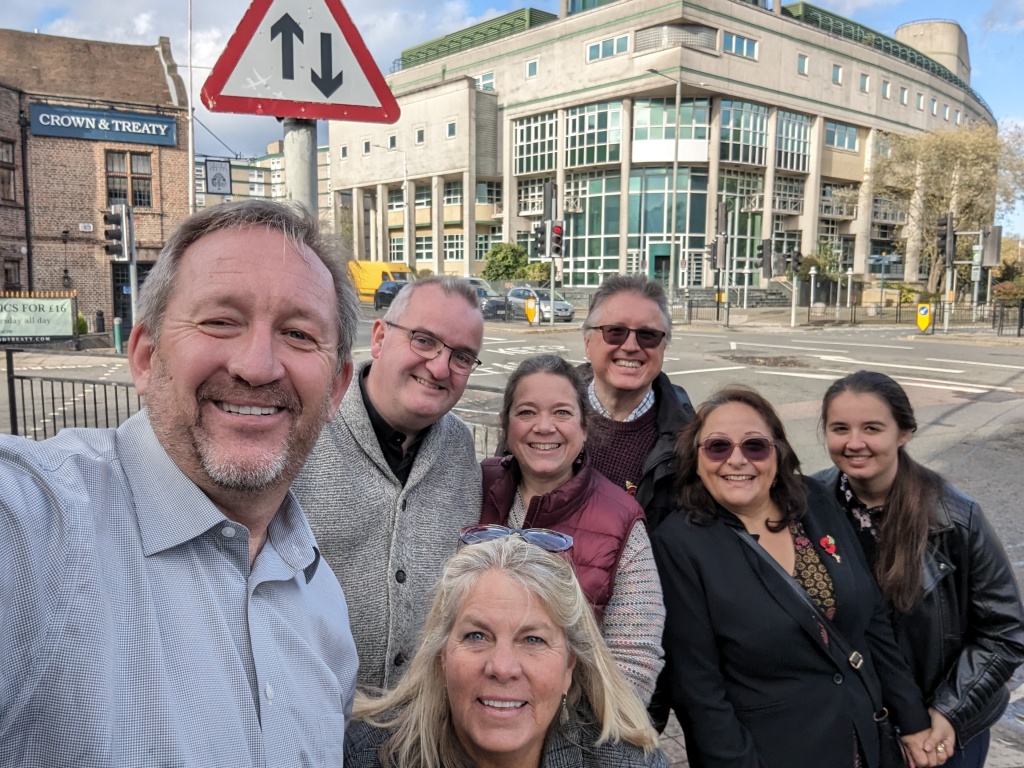
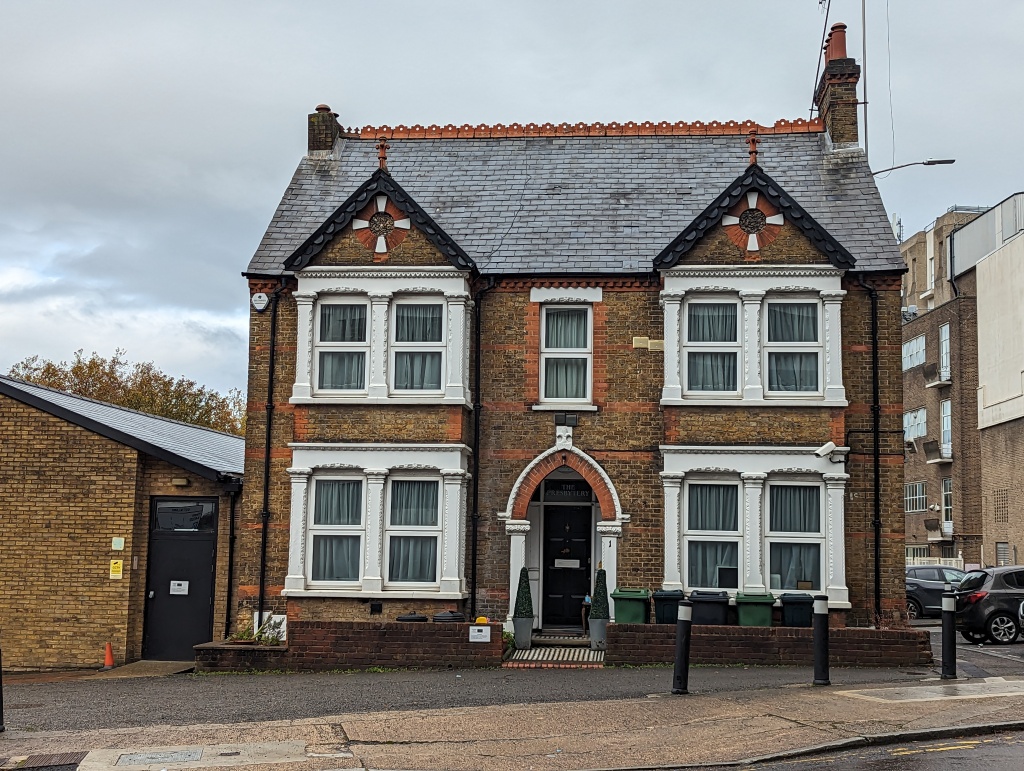
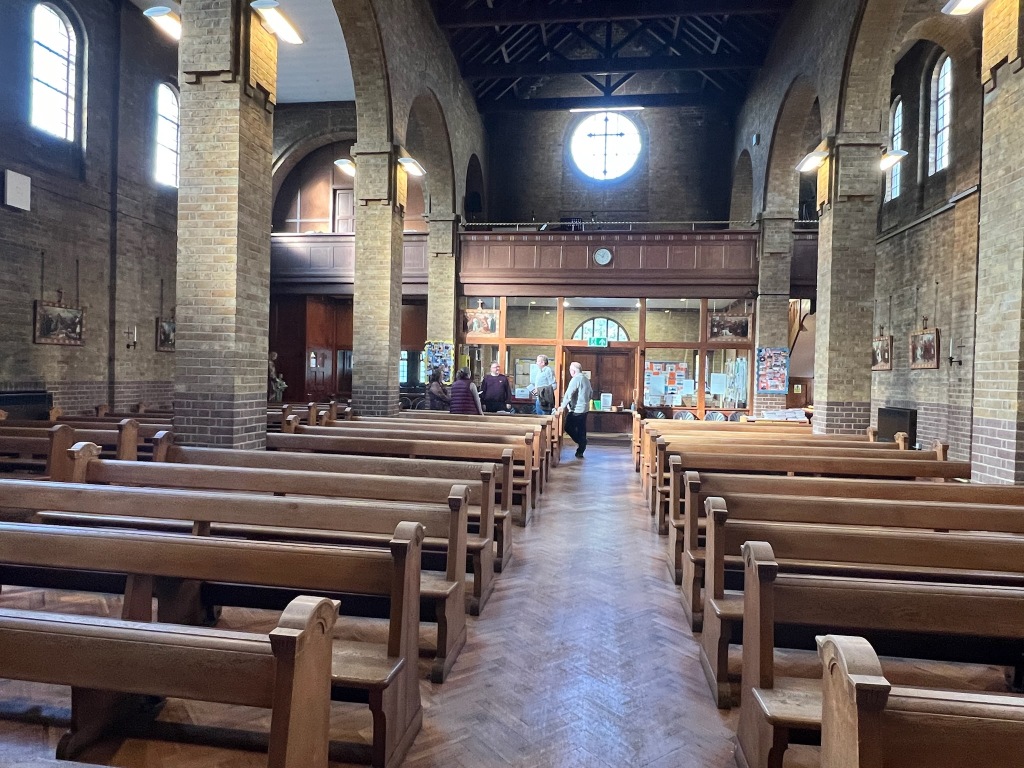

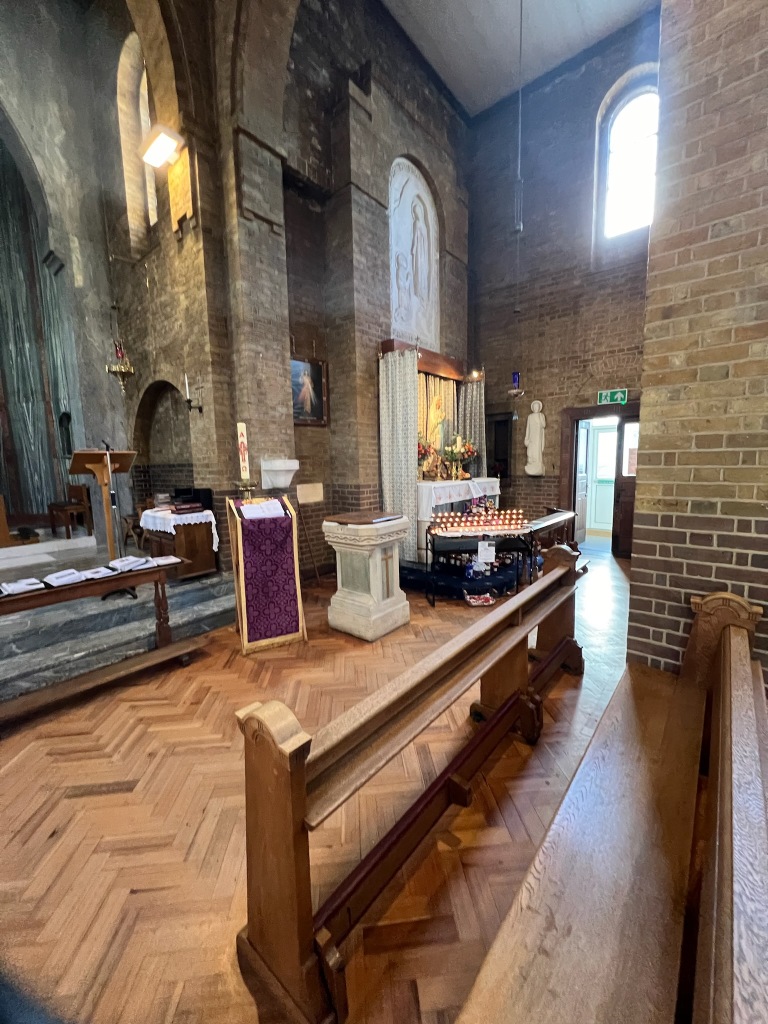
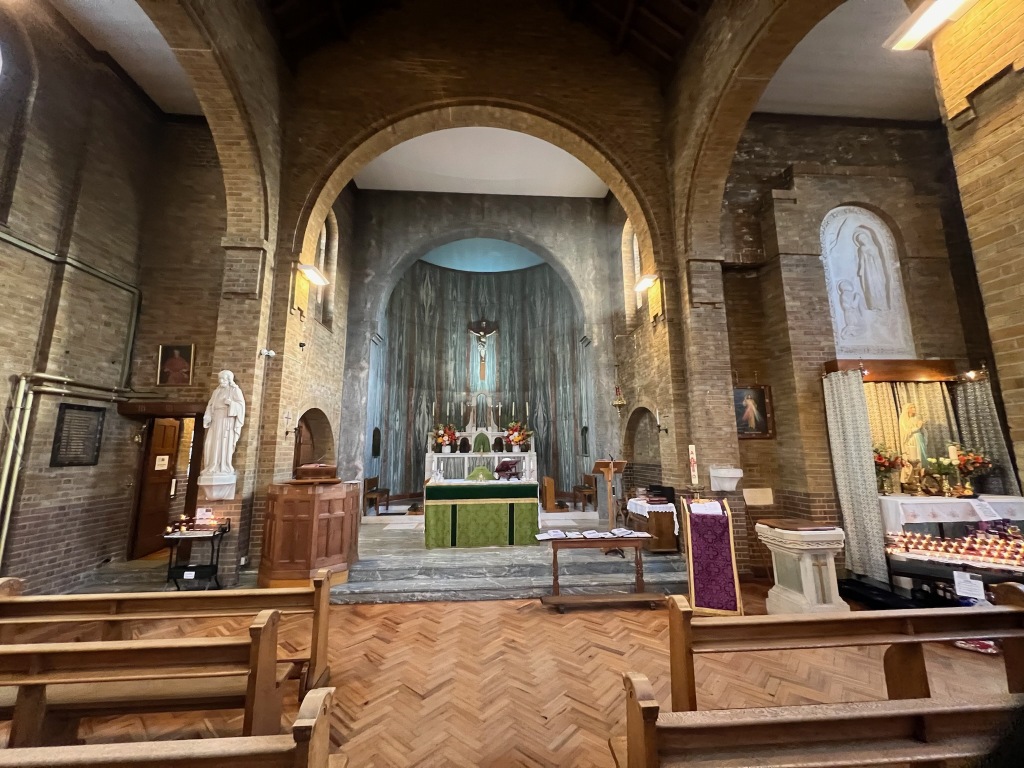
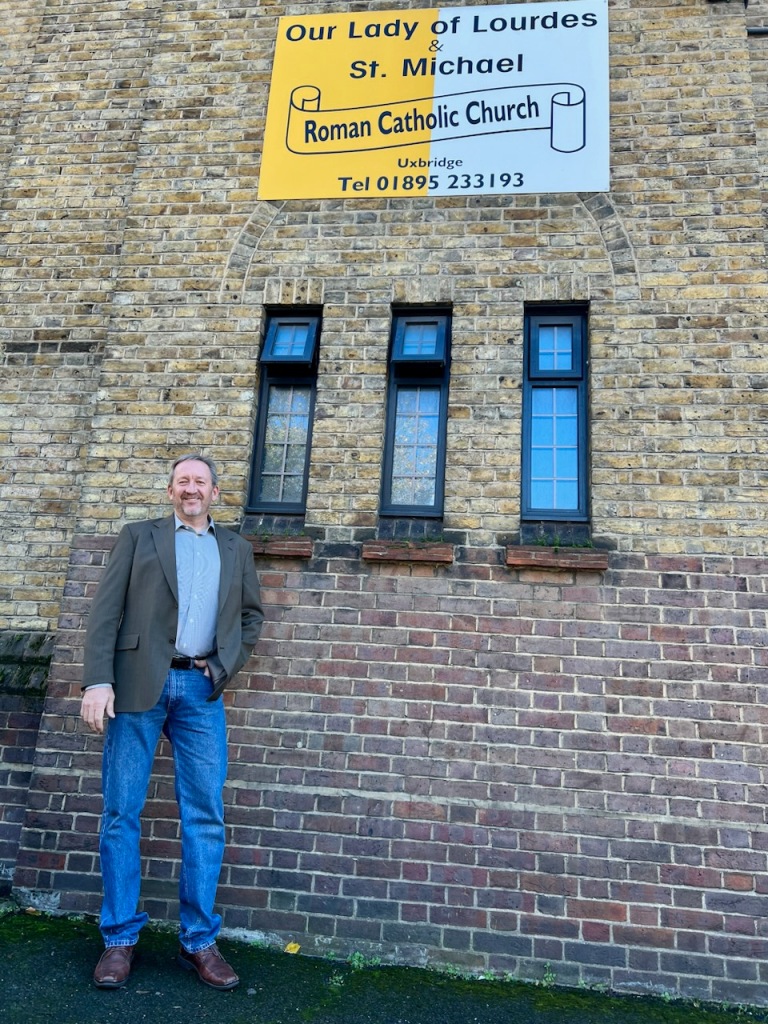
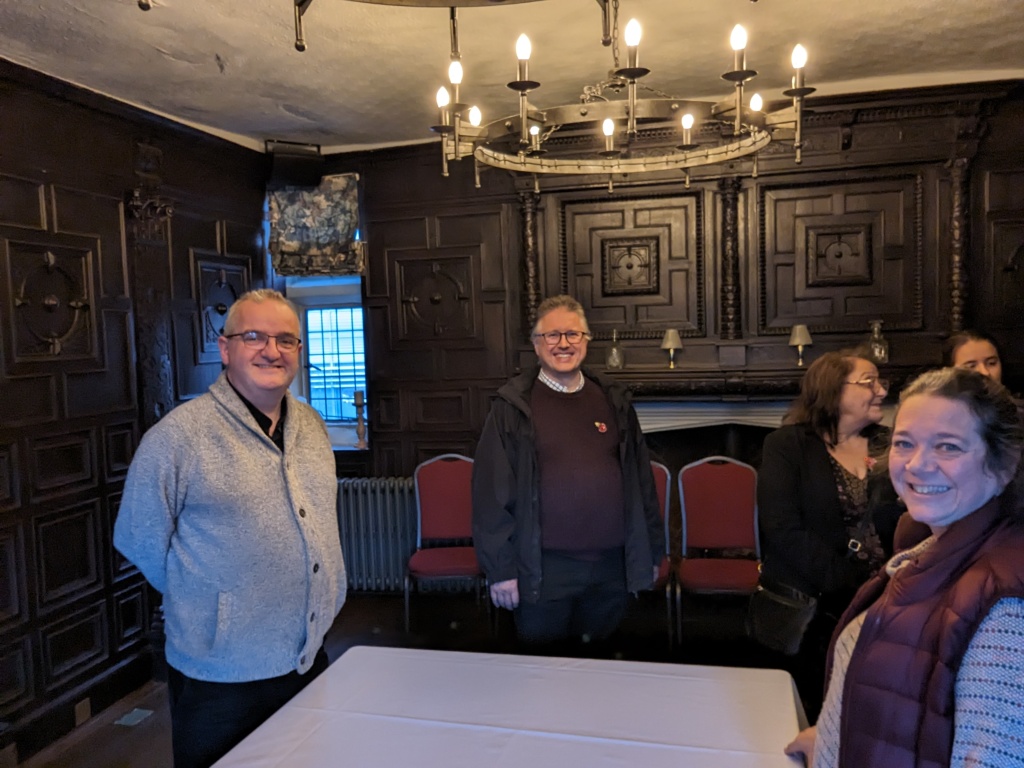
The church has a book near the altar where people can write the names of their lost loved ones. During the service Fr. Nick also read aloud names folks had given him for that same purpose. We later learned that Angela, his assistant (and author of some of his best lines) is also a bereavement counselor, so this healing focus is no accident. My overall impression was that Fr. Nick and Angela have made this church a genuine haven of faith, kindness, strength, solace and wisdom for the people it serves. I really don’t know how you could do better than that.

After a tour of the church, and being introduced to a number of parishioners, a group of us went for a chatty walk up to the Crown and Treaty for lunch (and another look around). I think my favorite part of it was hearing how Fr. Nick conducted the special catholic service at the Shrine of King Edward “the Confessor” (which lies at the very heart of Westminster Abbey). This was a request made by King (now Saint) Edward that has been honored since his time. Recall that Westminster Abbey was taken over by King Henry VIII when the Church of England was formed specifically to break away from the control of Rome, so this inclusion of catholicism is a tradition not everyone is happy about.
At St. Margaret’s Church
St. Margaret’s is an Anglican church, and one of the oldest buildings in Uxbridge. Some form of it has stood at its location on the edge of High Street since the 1000’s. It is a beautiful old church that has been built up over the centuries. Vicar Andrew is good friends with Nick and Angela, and attended the first talk on Monday. At that talk, he offered to host us for a tour of St. Margaret’s and lunch on Friday–of course we said yes!
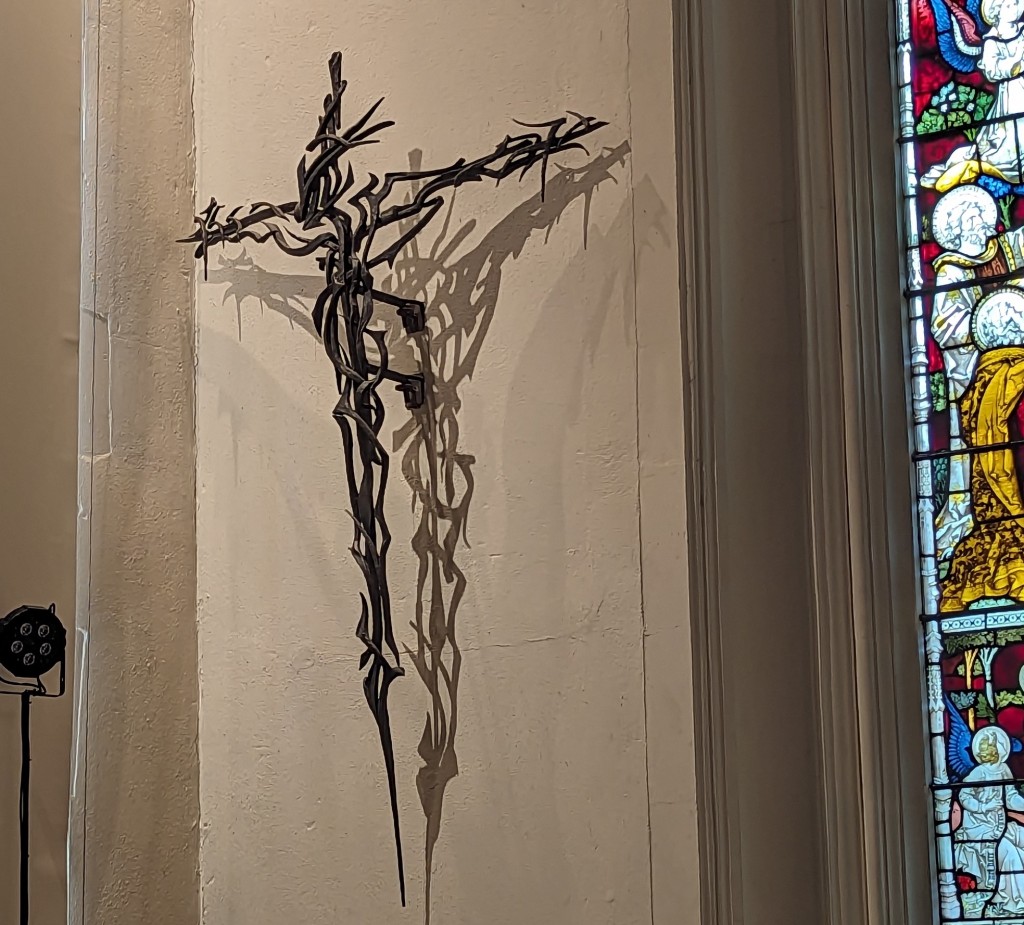
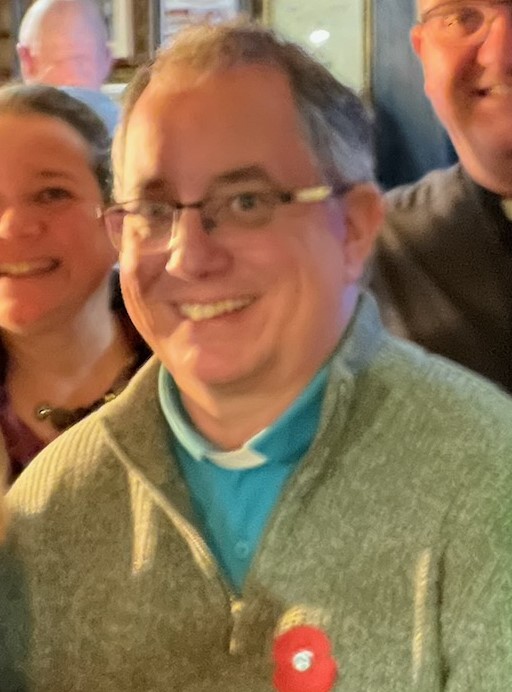
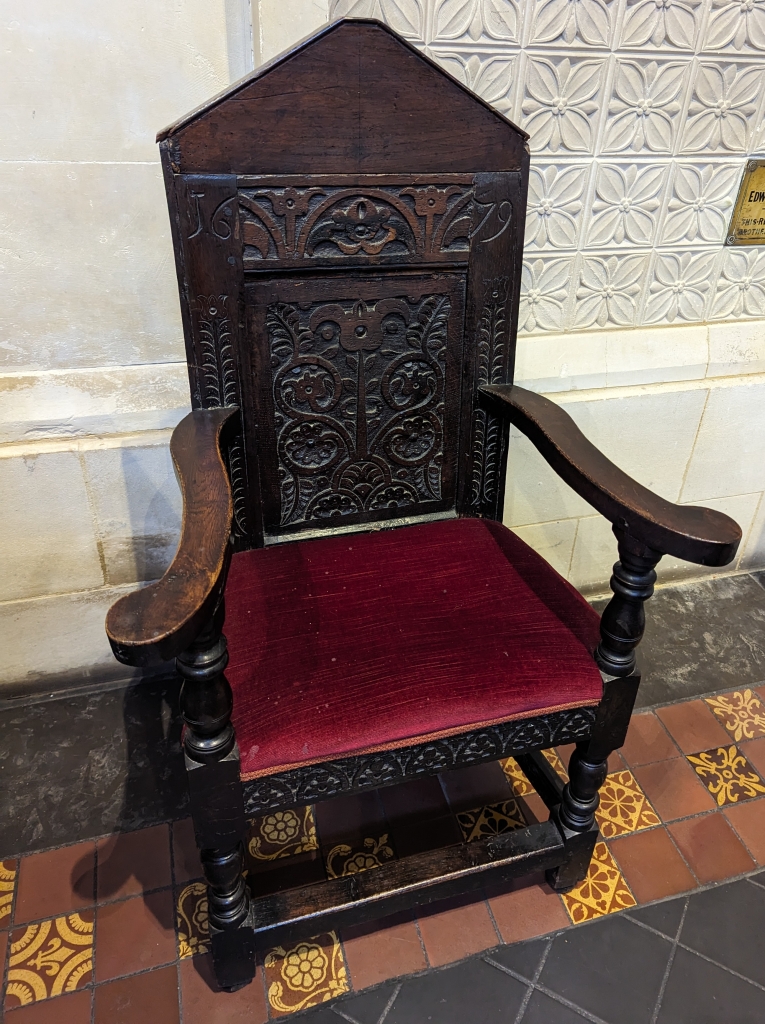

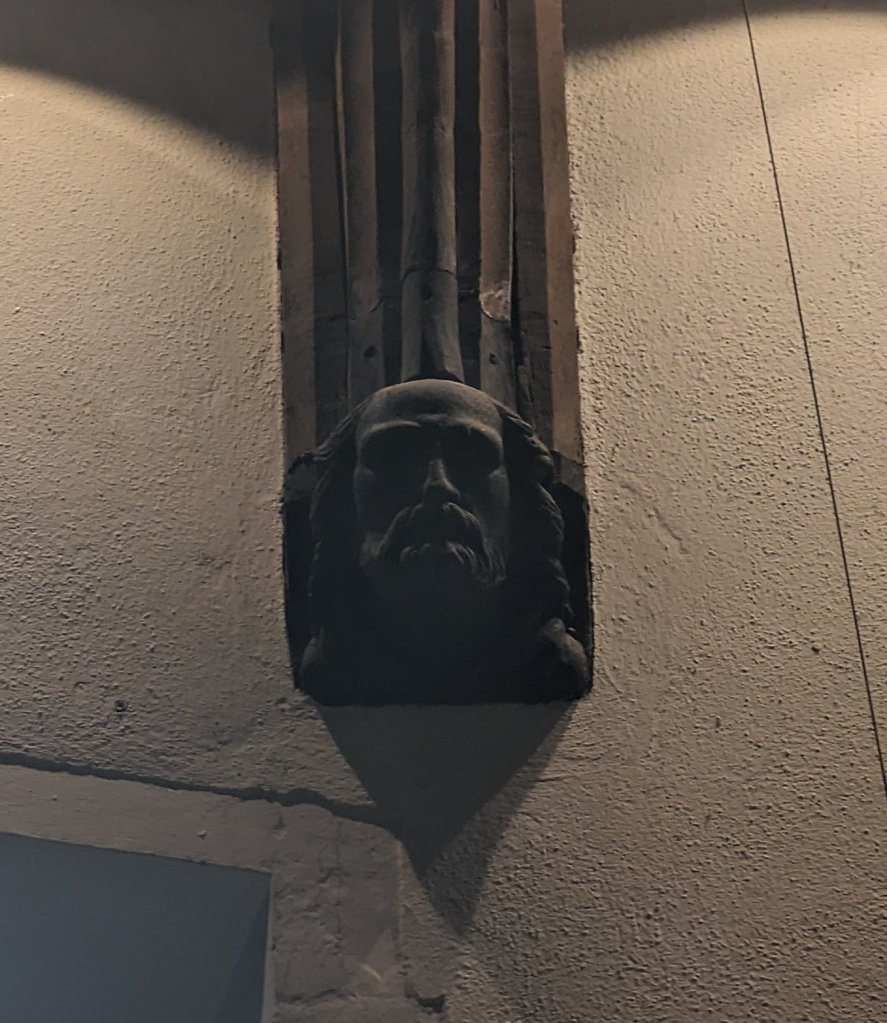
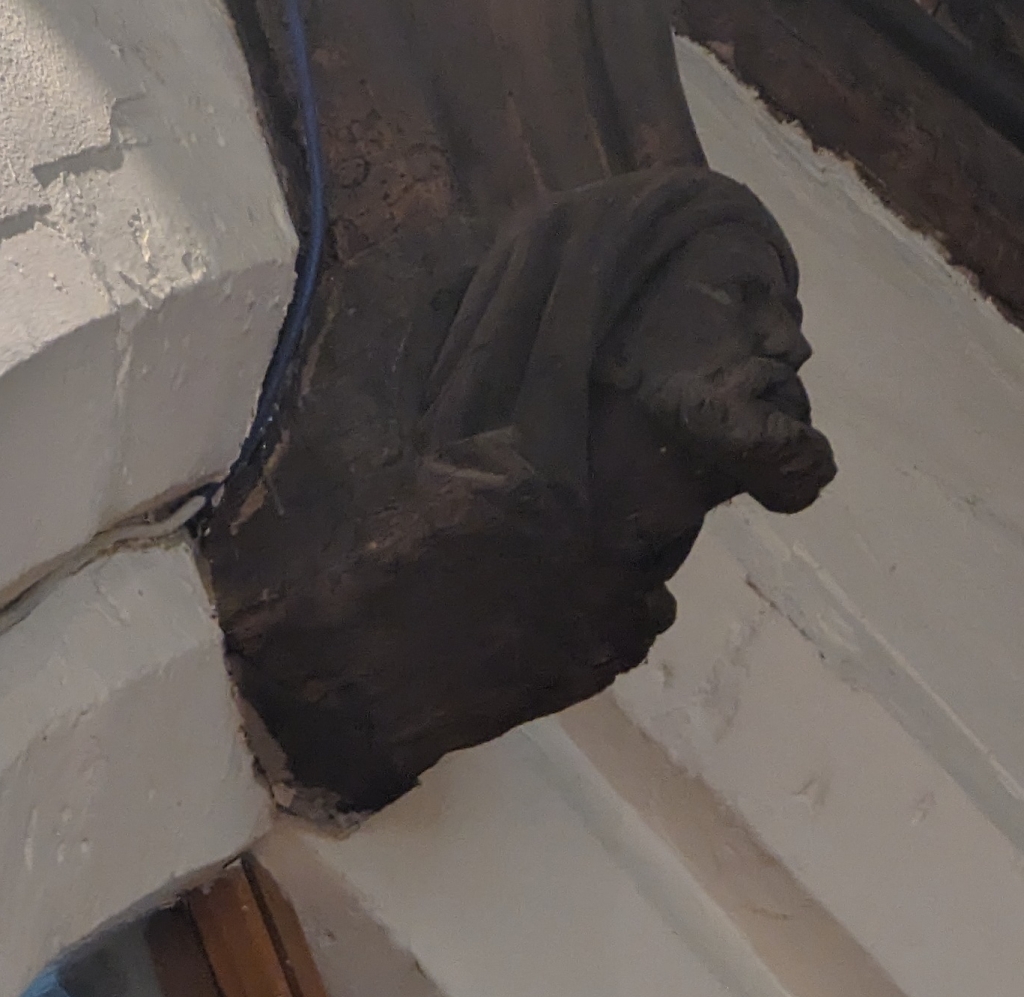
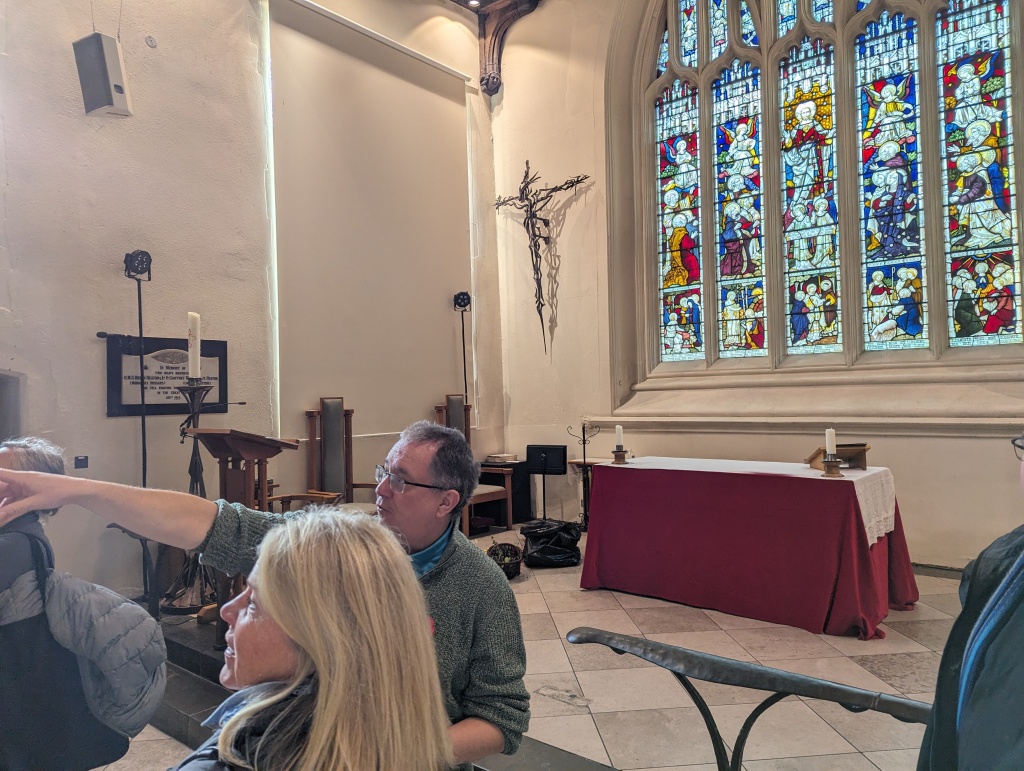
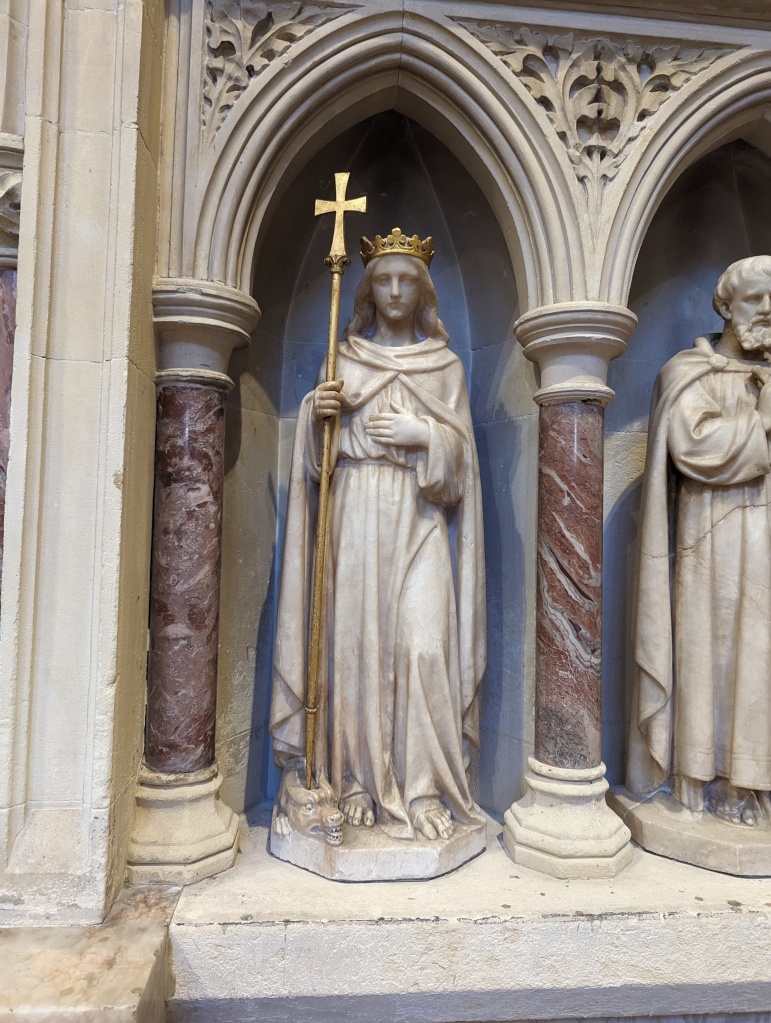
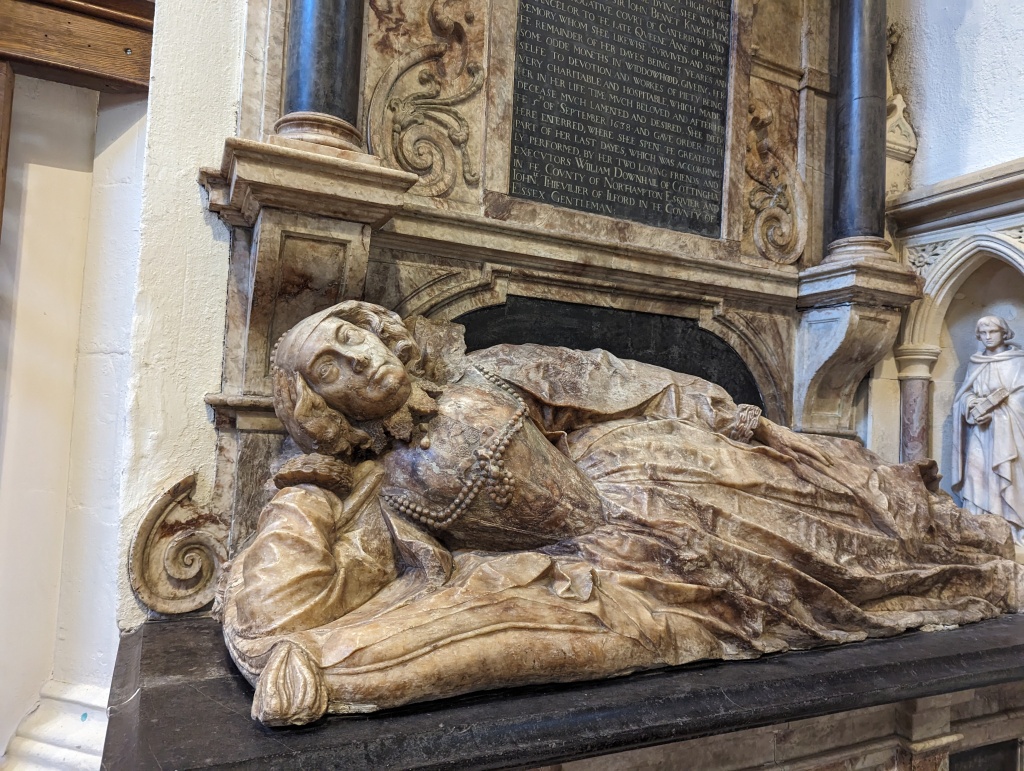

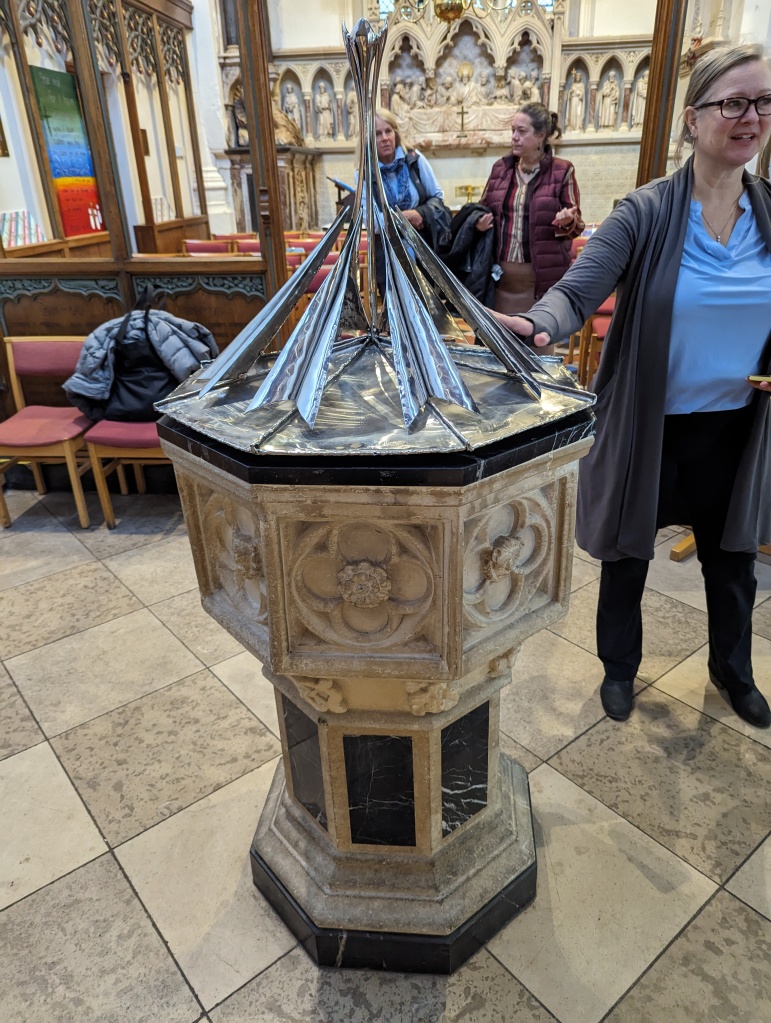

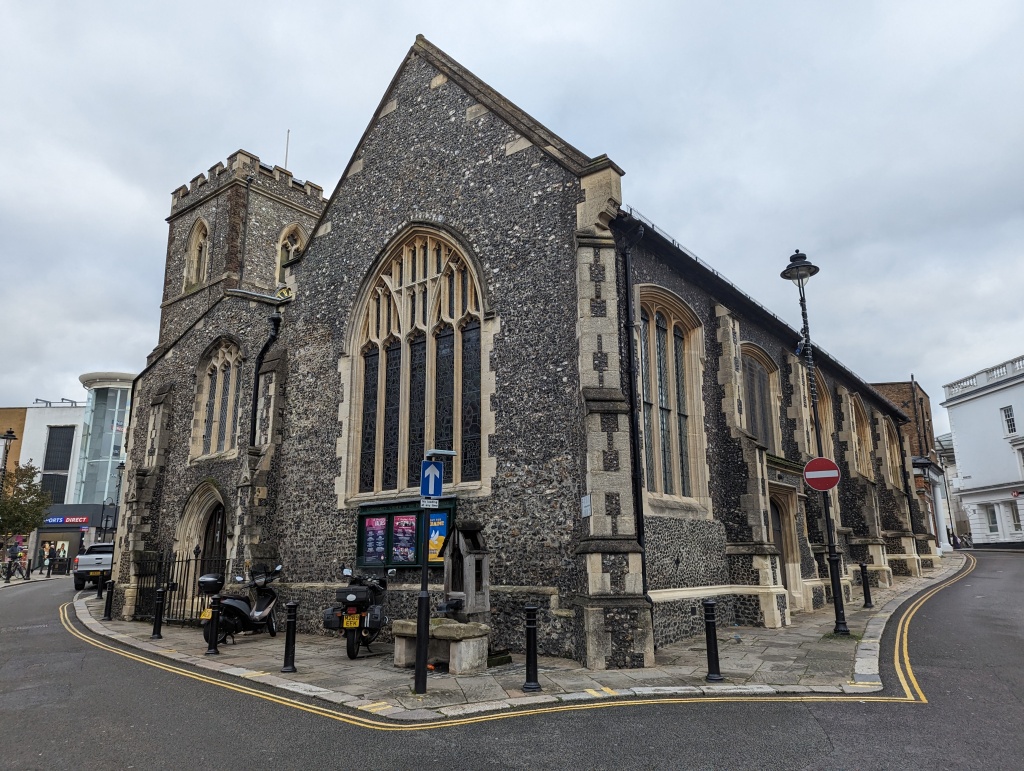
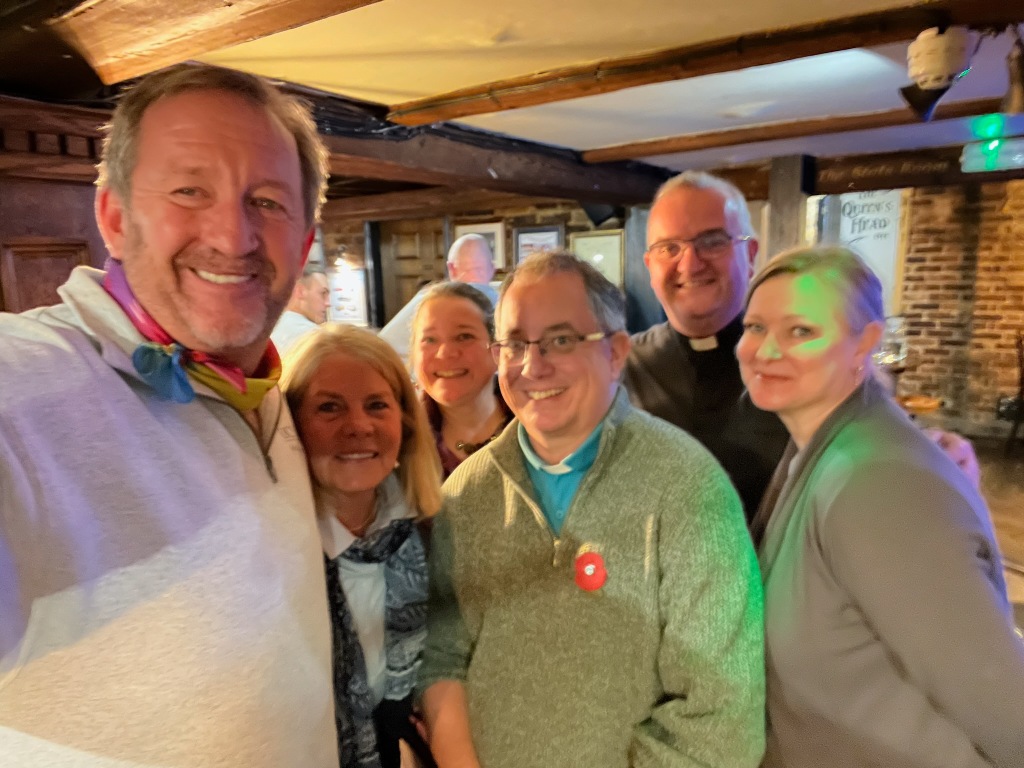
Along with Nick and Angela, Vicar Andrew is one of my new favorite people. With a graciously warm style, he is a pleasure to talk with. While at lunch our table was raucous with laughter and back and forth chatting. Like Nick and Angela, Andrew is a man of considerable depth. He has spent a lot of time in the middle east, and served in a special role as liaison with the leaders of other faiths, including shia Ayatollahs. I trust so little of the information we get through today’s media. This made it a high voltage experience to hear the perspectives of someone who has first hand experience respectfully interacting with sometimes prickly members of these other faiths and cultures.
Like Nick and Angela, Vicar Andrew is truly his brother’s keeper. While we were having tea and biscuits in the church, I asked about people I noticed coming in, and found out the church supports a minor food bank for folks who might otherwise not be able to eat. Nothing out of the ordinary for them–just another thread in the fabric they have woven in Uxbridge. In a world overrun with influencers and the selfishly inclined, this kind of softly spoken leadership and moral service to the community was humbling and inspiring.
At the Hillingdon Archives
Another individual we were fortunate to meet was Paul Davidson, a collections officer at the Hillingdon Archives. On Monday night, we learned of an important historic document that was a particularly relevant source of information regarding the grounds and layout of the original treaty house. Unfortunately, by the time we were able to get to the archives, we would normally not have been able to see it (the archives are only open by appointment on Wednesdays and every other Saturday). Although a busy fellow, Paul took time to come down and talk to us for a few minutes about what we needed. Seeing that this information would affect my upcoming talk, Paul squeezed us in later that day.

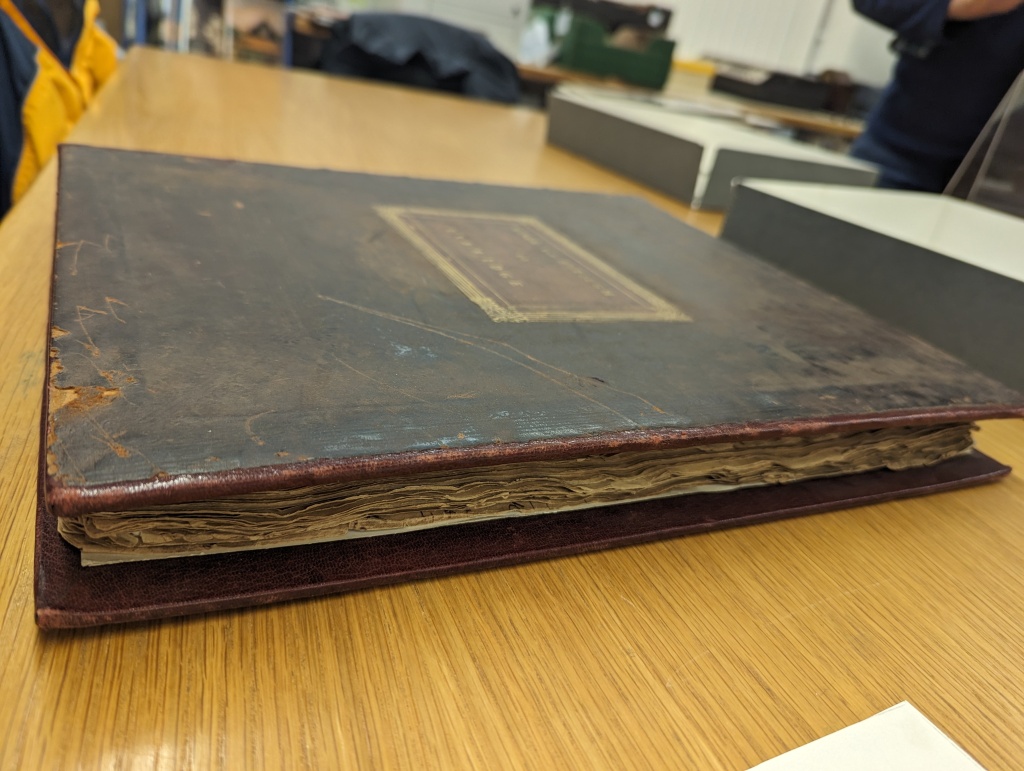
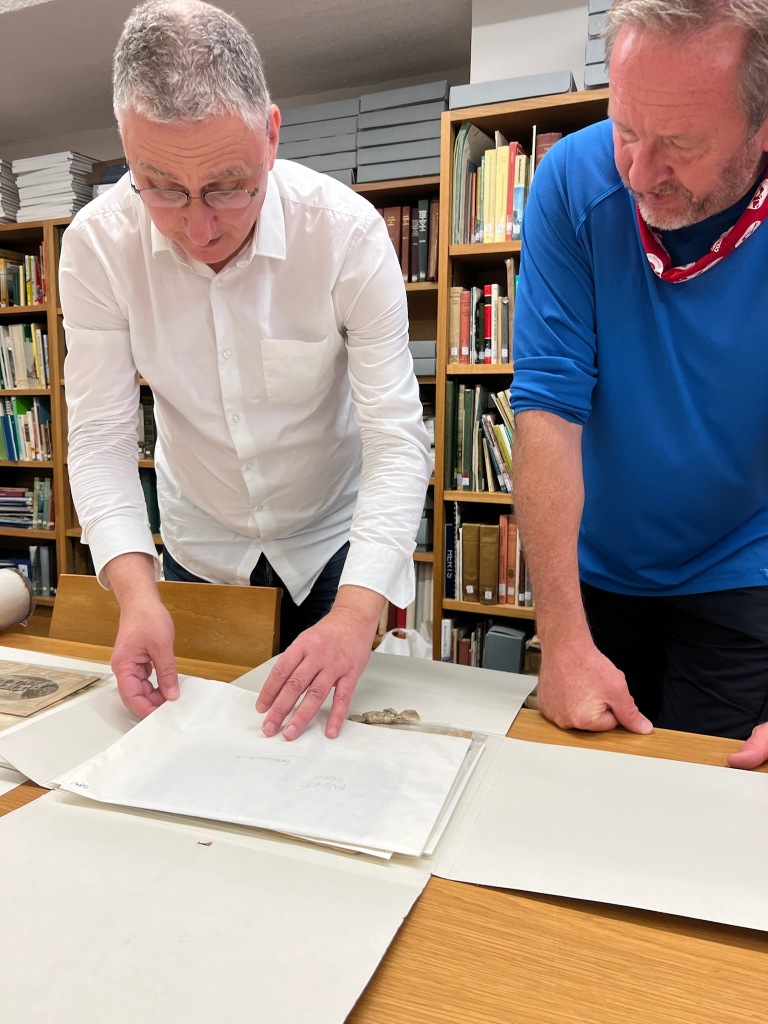
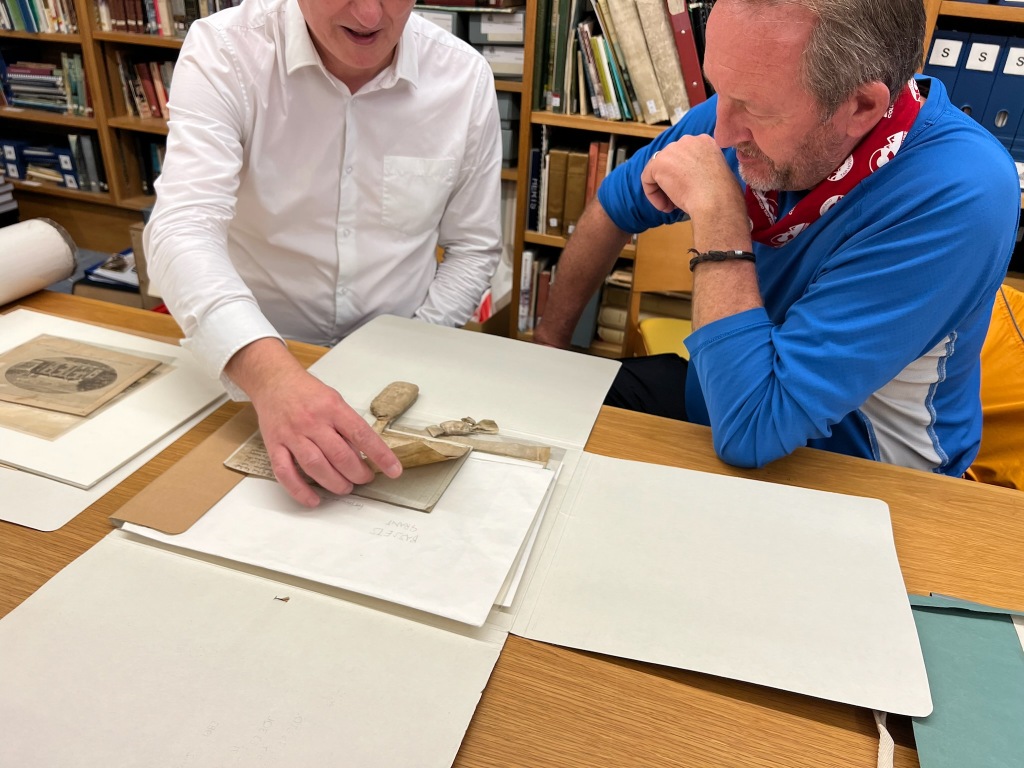
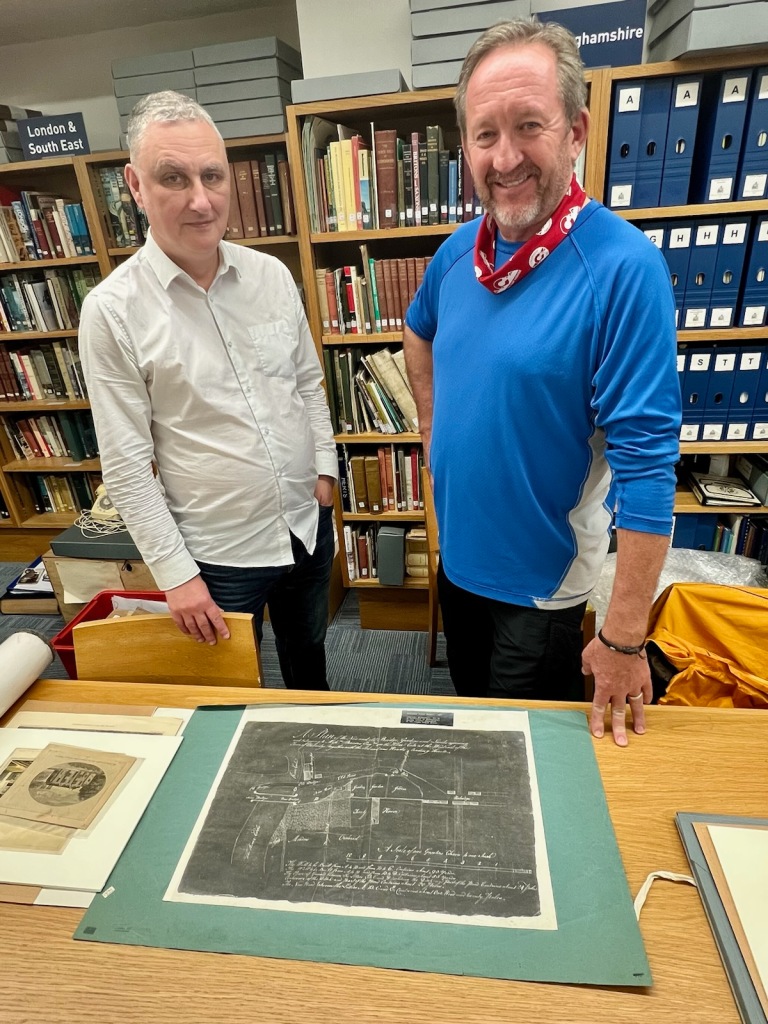
Mary broke away early from our meeting with Roddy to make the appointment at the archives. By the time I was able to join them, she was steadily working her way through photographing several boxes of artifacts related to the Treaty House. It will take some time to work our way through it all now that we are home again!
Best of all, the key document we were hoping for was there–a photo negative of a plan map of the roads and principal buildings between the Rivers Colne and the Frays from 1775. Although the original house had been demolished several decades before this document was made, it was entirely credible, and had been made within living memory of the original house. It was exactly the source I had been so far unable to find. I look forward to analyzing it, including overlaying it onto satellite imagery to refine my graphics of the grounds, and to update the orientation of the Treaty House itself.
While we were there, Paul showed us a couple of special treasures of the archives, including a fascinating large bound book of source materials for the “Redford and Riches” history of Uxbridge. It was an archive unto itself, filled with source materials. I have a copy of the published result in my own library. Paul also showed us the license for the market in downtown Uxbridge. I believe he indicated it was at least 900 years old…
It seems we needed to come to Uxbridge to find this critical information. My deepest thanks, Paul, for the grace to help us avoid leaving without it.
At the Crown and Treaty
The day we landed felt like a day from the Twilight Zone–but in a good way. After we dropped the artworks off with the folks at Croxley Galleries (who did a splendid job with the framing, btw), we stopped by the Crown and Treaty to finally meet Sam, the General Manager there.
You have to understand, I have studied this building and its history for 5 years without ever being inside it. Walking in for the first time, I felt like I was going to overload from absorbing details about the place. My attention was flashing all over, trying to look through the building’s present state to find those enduring artifacts of its original form. And just as the dizzy was fading, Sam walked up and introduced himself.
Sam and I don’t go way back–only to June of this year. Starting with a email exchange, we realized we had a shared interest in making the early history of the Treaty House more tangible to its modern visitors. We decided to see if we could make it happen. And now, 5 months later, we found ourselves facing one another for the first time. It was novel seeing him in the flesh, but it took only a few moments to acclimate to the familiar Sam I’d been working with for months. And we began working together as fluidly as we had been online. In the end, we got it all done.
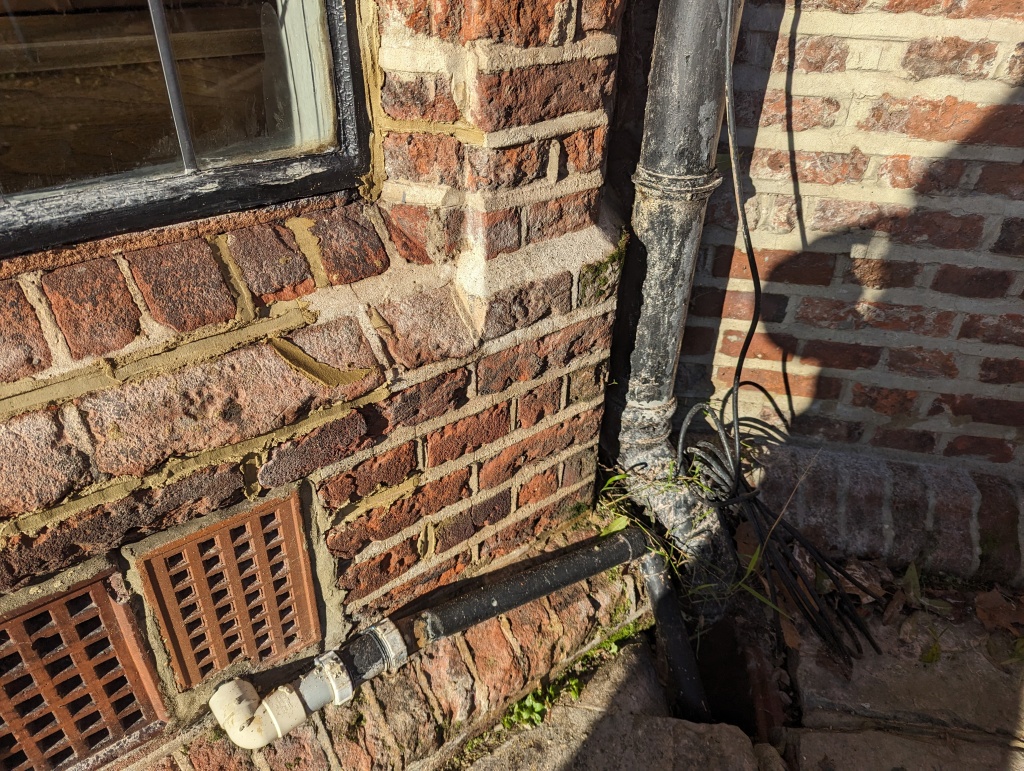

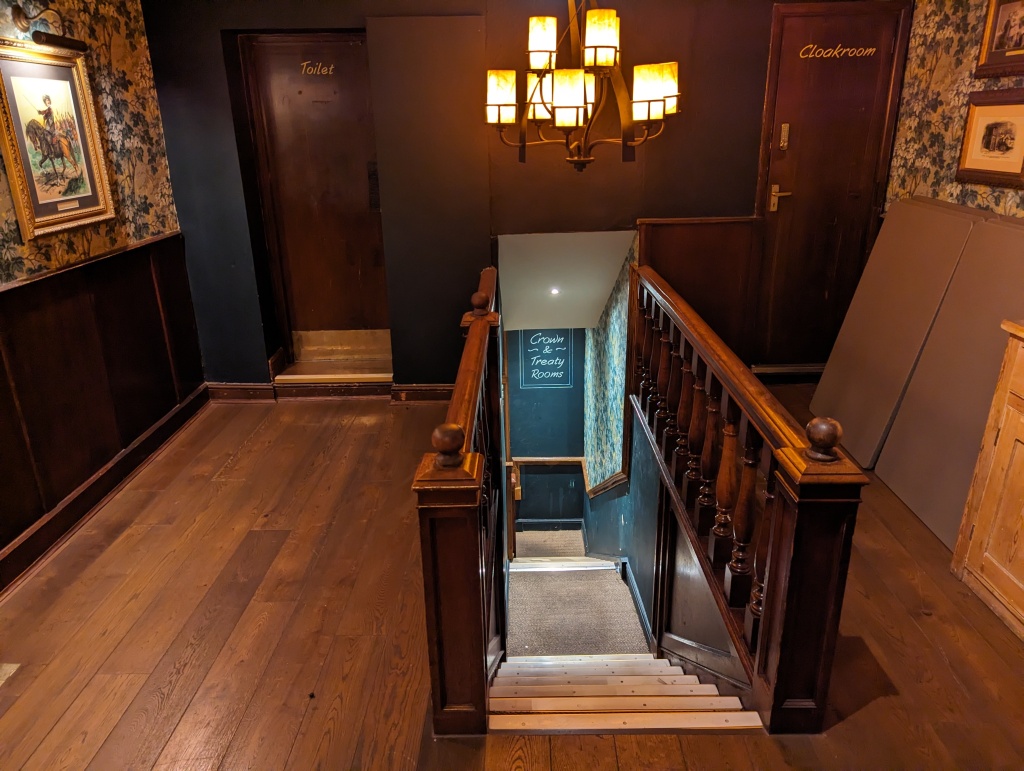
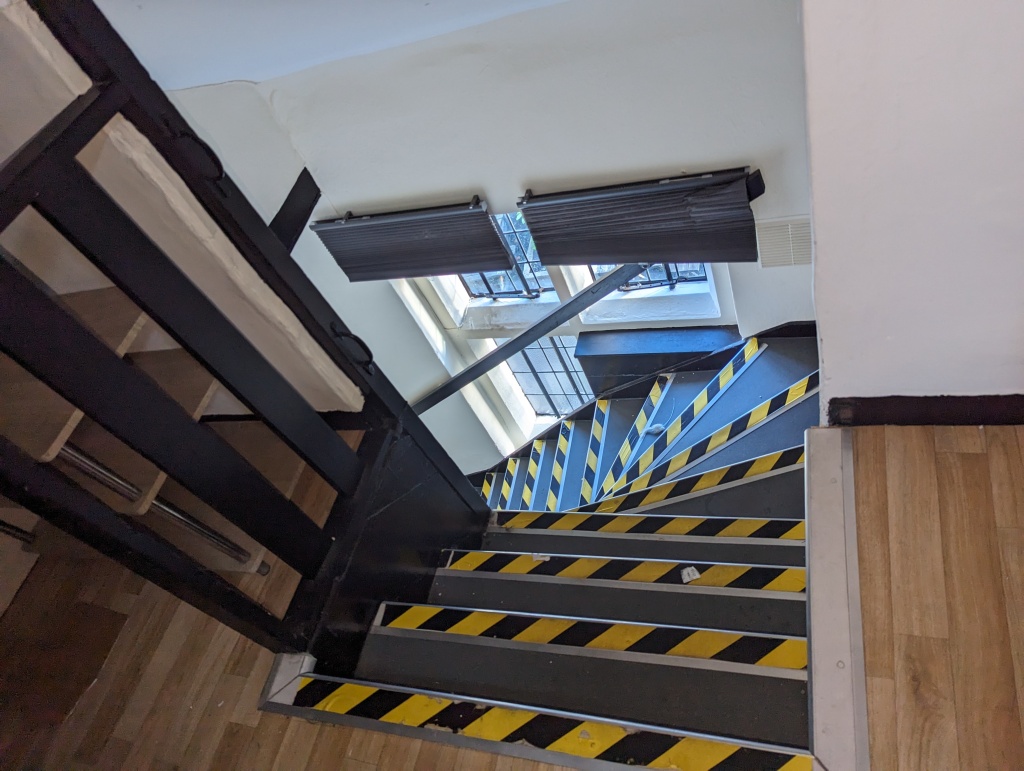
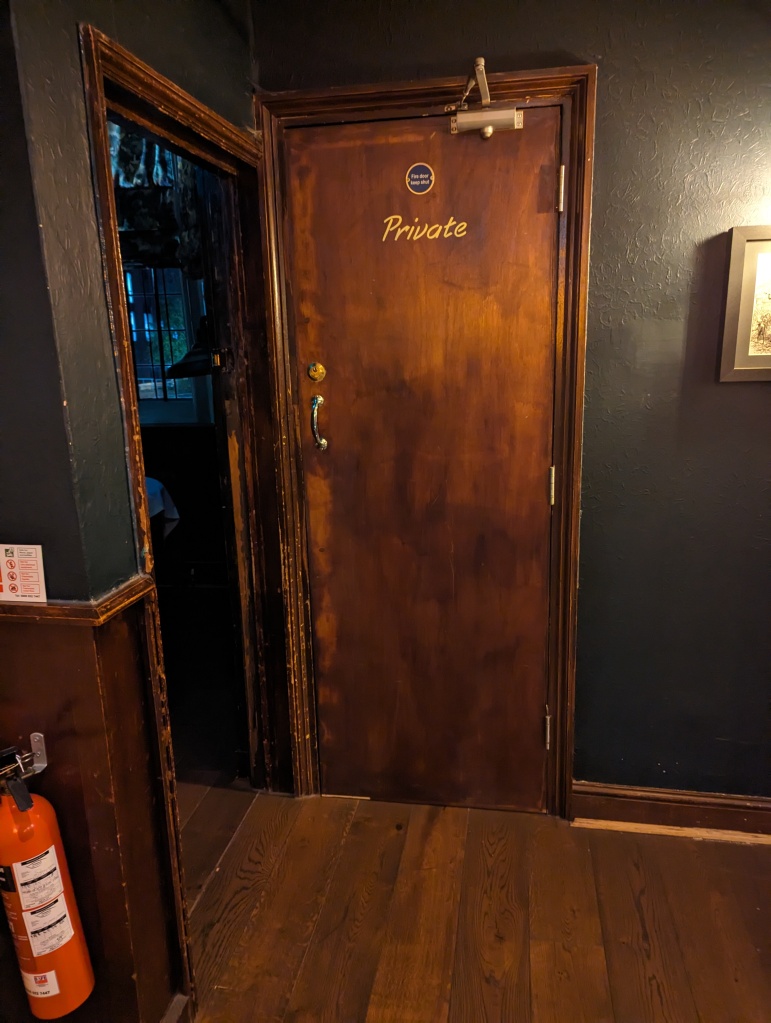



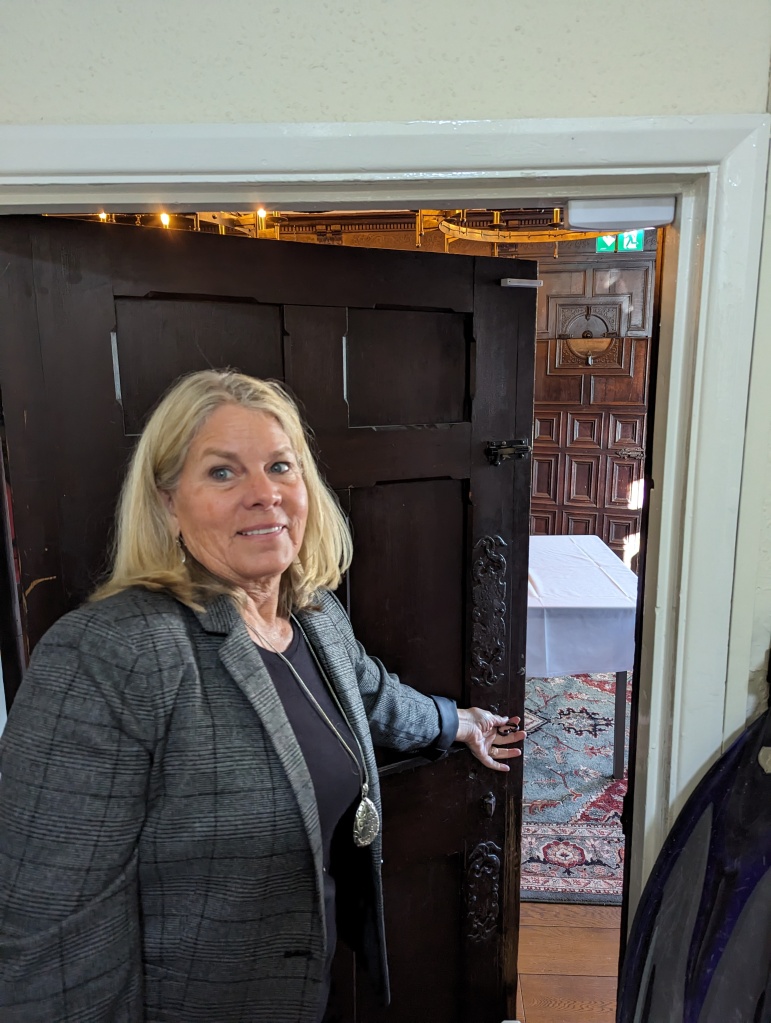

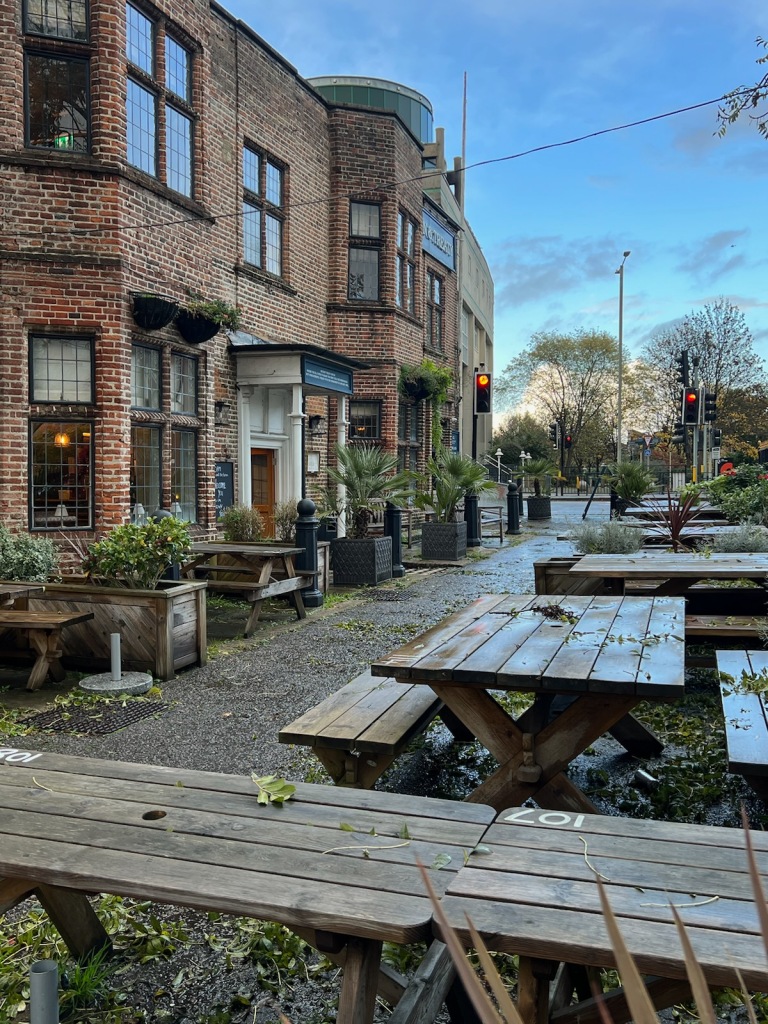
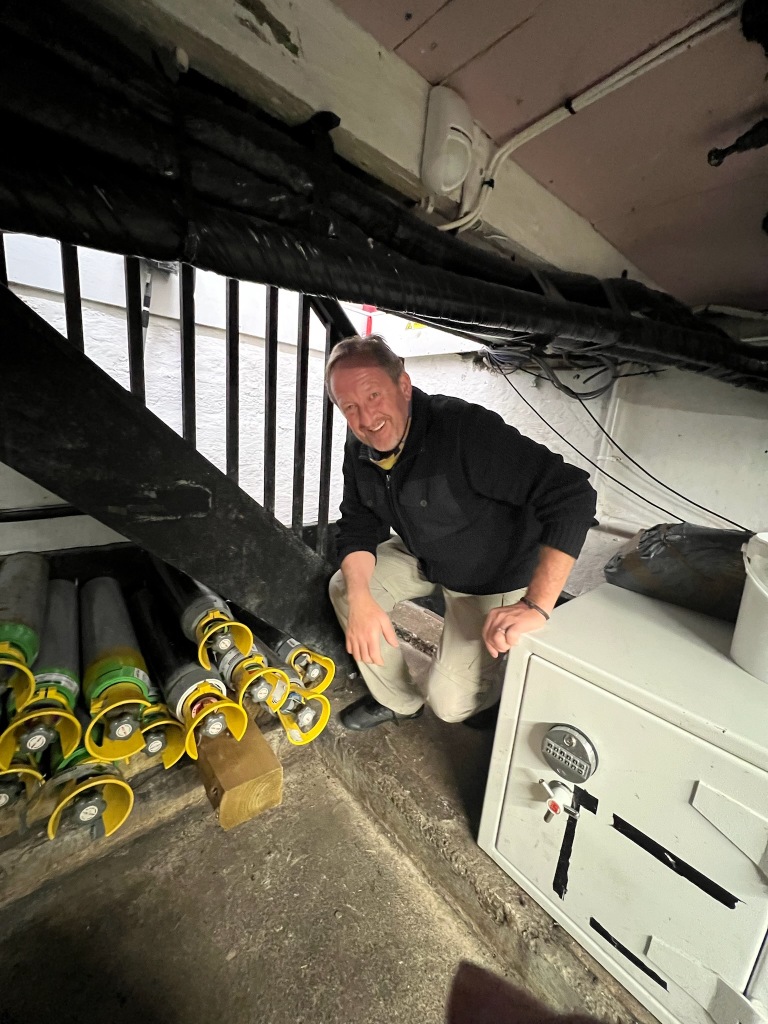
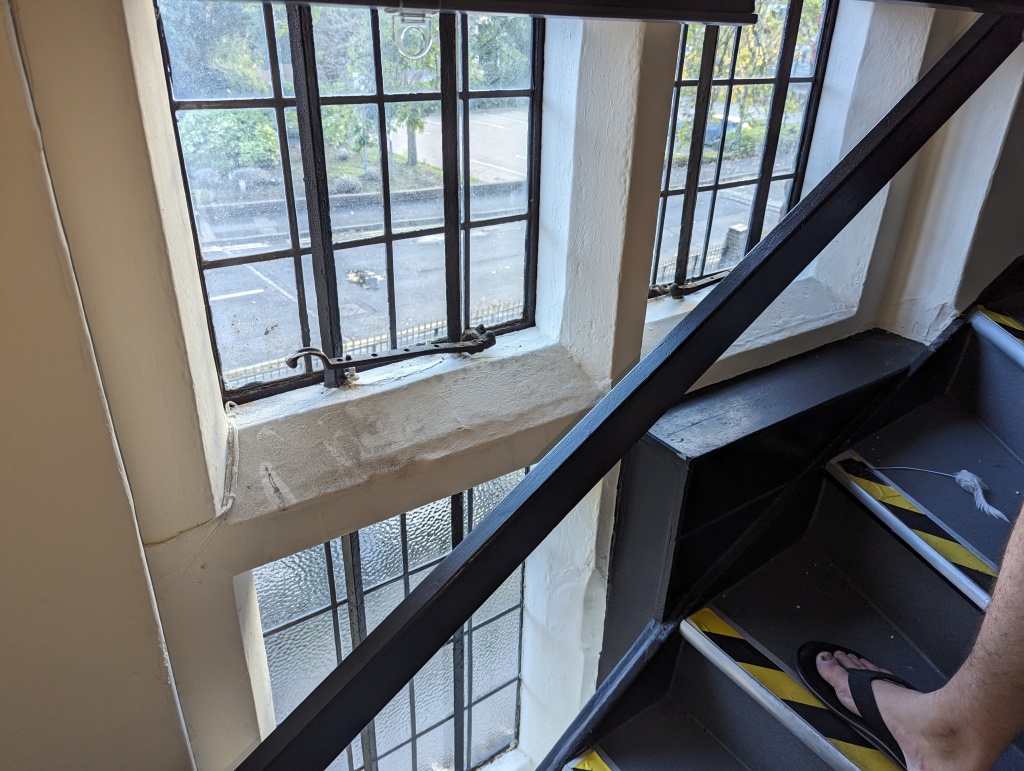




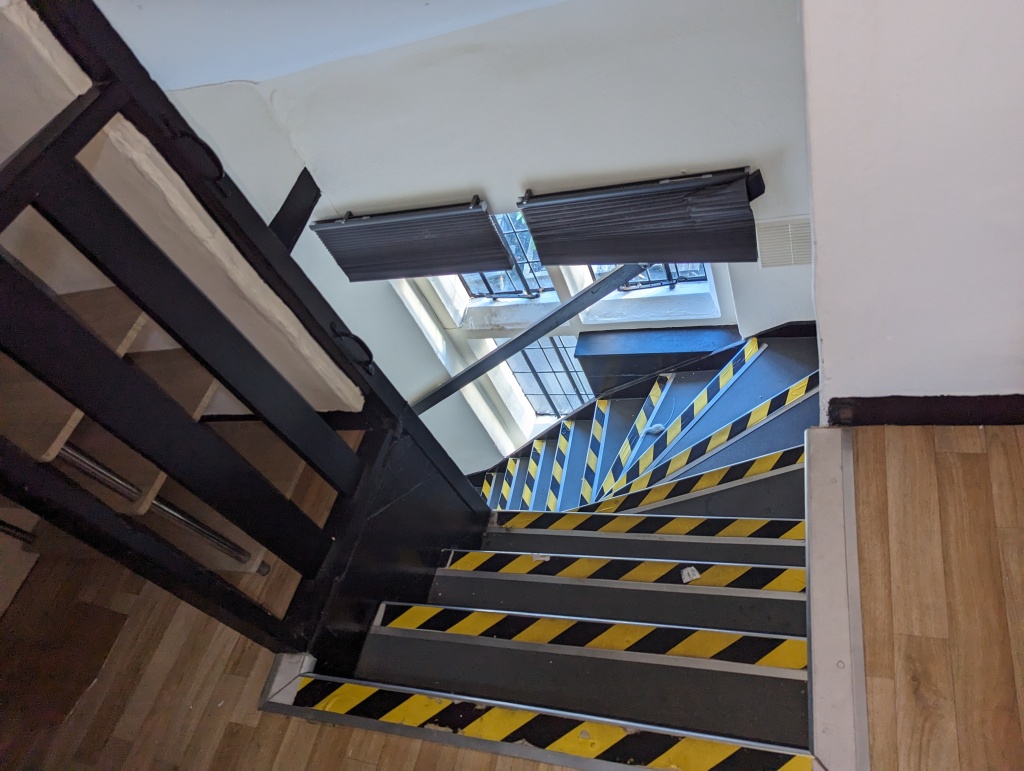
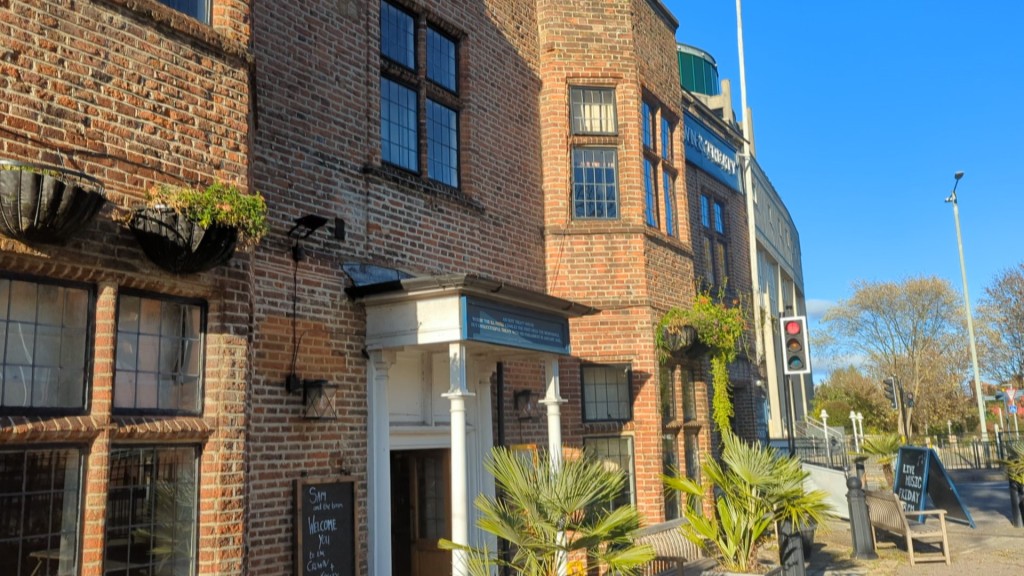



Sam and his staff were wonderful hosts to us. We were given license to measure, photograph, poke and prod as needed to understand the details of the building. Access was even arranged to see important aspects of the non-public areas of the building including a peek into the attic for a look at the roof structure. We got to know the staff, and were always greeted with a smile and a warm “hello”. Being greeted with such hospitality really made it worth all the effort and expense that went into this project–for us, and also for the artist, Rhonda, who travelled to the UK to be part of the event as well.
I always assumed we would need to make an update to the piece we’d developed. And we do. Perhaps when that work is done, we may travel back to the UK for a chance to see this public window into the Treaty House’s proud history finalized. It would be a great excuse to see Sam and our other new friends in Uxbridge again.
My first meeting with a relative of Sir Richard Lane
Roddy Lane and I have been in intermittent contact for a long time. Roddy has inherited a significant geneology study of the various Lane families of England from his father. It is quite an accomplishment, and is quite well organized.
I was delighted to learn that Roddy would be able to come to Uxbridge to meet with me. I was even more grateful when I learned he was making a 2-1/2 hour journey to do so!

Once I get through the Treaty House project and return to my primary research on Sir Richard Lane, I intend to start by focusing on comprehending the work Roddy and his father have done. I would very much like better understand the relatives and close family friends of the Lanes to see if I can locate any other surviving artifacts of his life.
Roddy is a delightful person, and someone I felt a lot in common with (including skiing in Colorado). I regret that we didn’t have more time to talk, as I enjoyed his company immensely.
The Battle of Britain Bunker
Remembrance Day brings me to one last “jewel” of Uxbridge. This one is not about anyone we met, but rather about people I have always admired: Winston Churchill, the architects of the “island nation’s” defense, the soldiers and airmen who fought the battles, and the heroic grit of the ordinary people who persevered through them. Together, they “fought like Ukrainians” when Hitler attempted the subjugation of England, and smashed his vaunted Luftwaffe against the wall of English ingenuity and resolve.

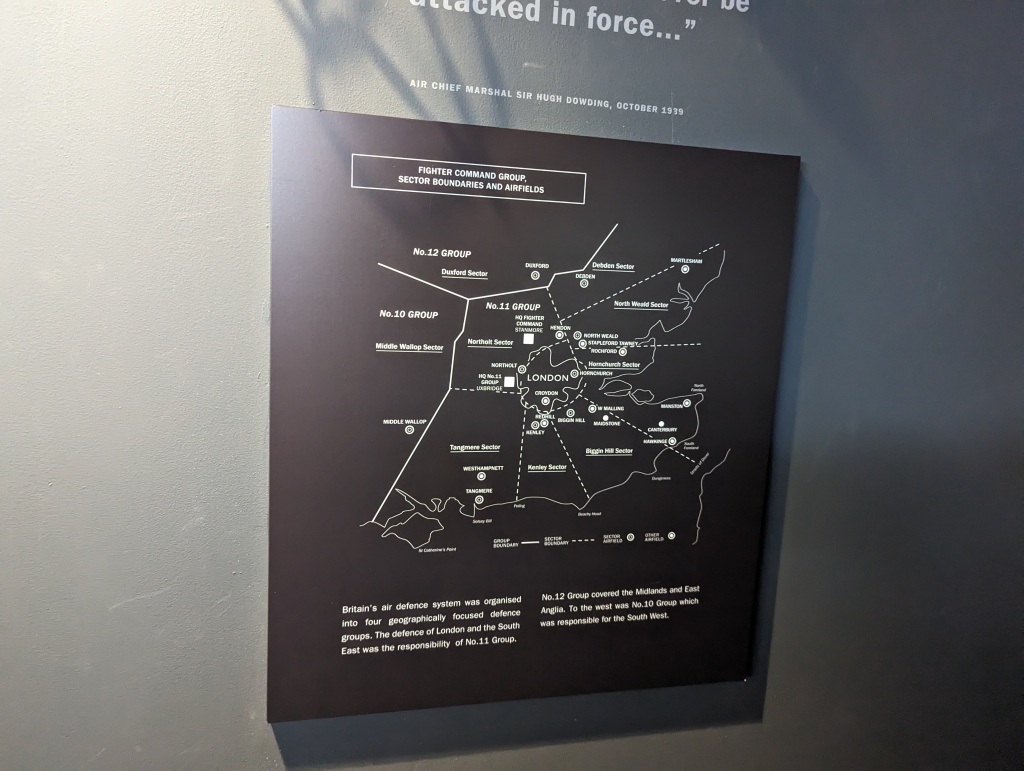
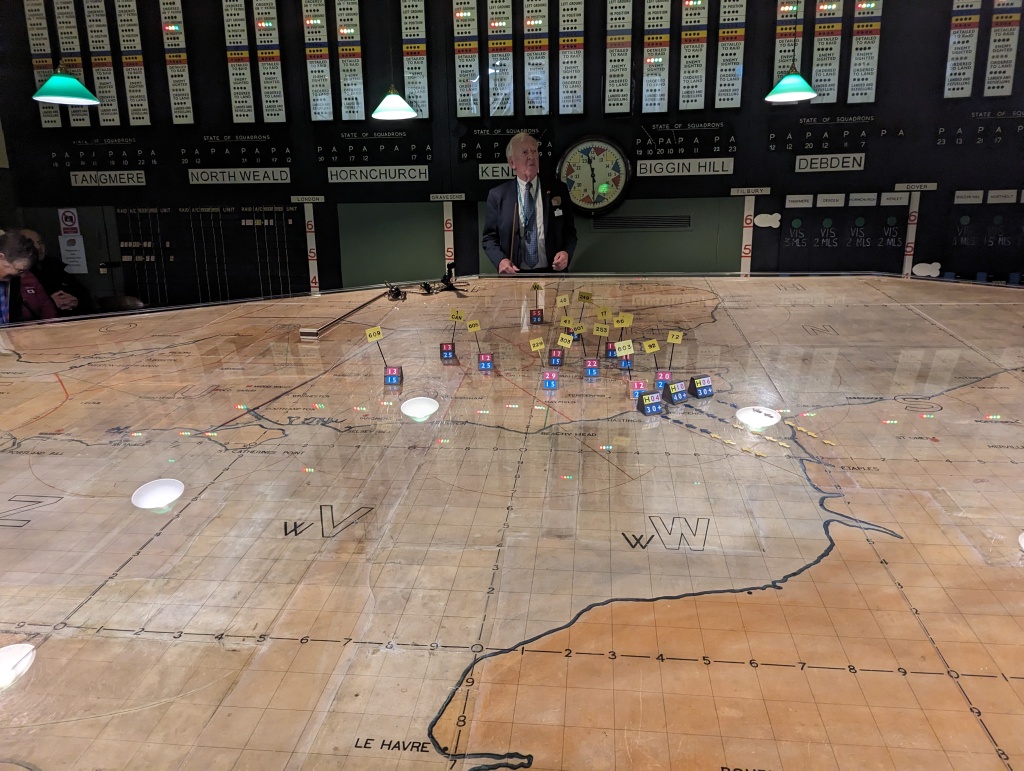
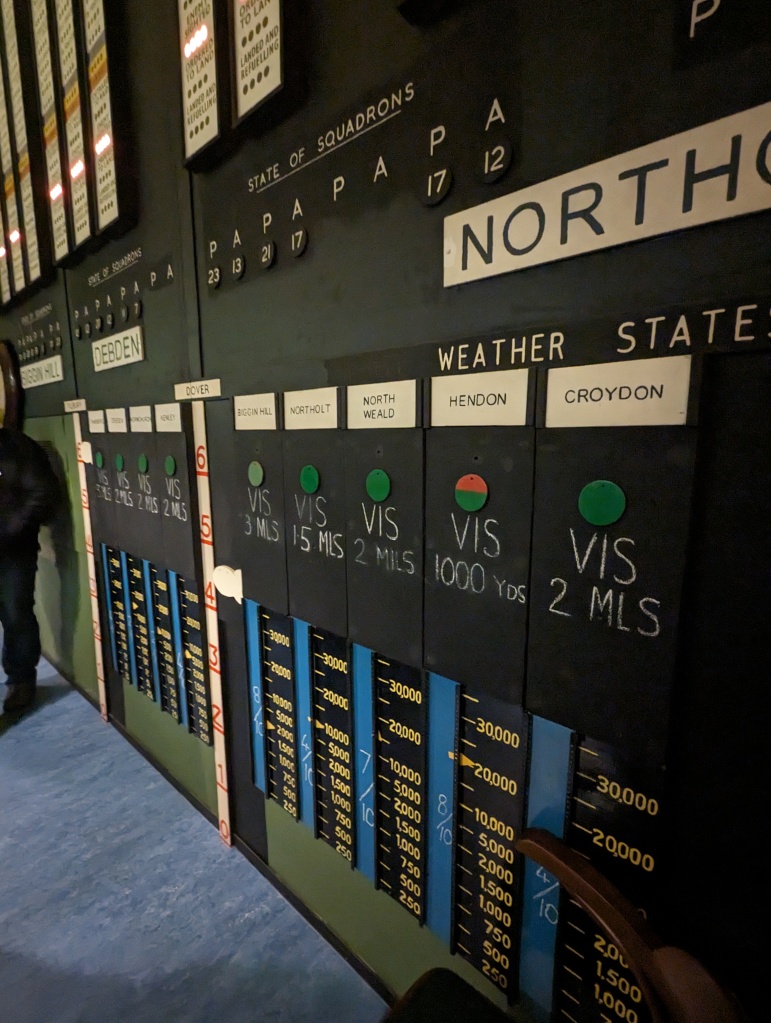
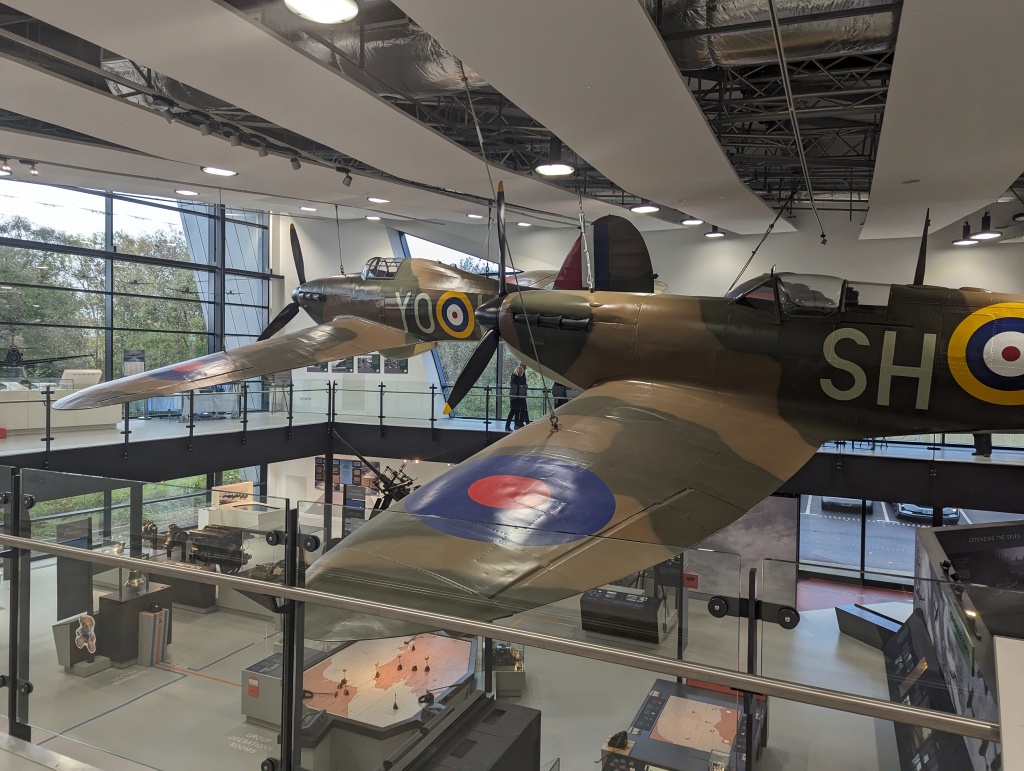
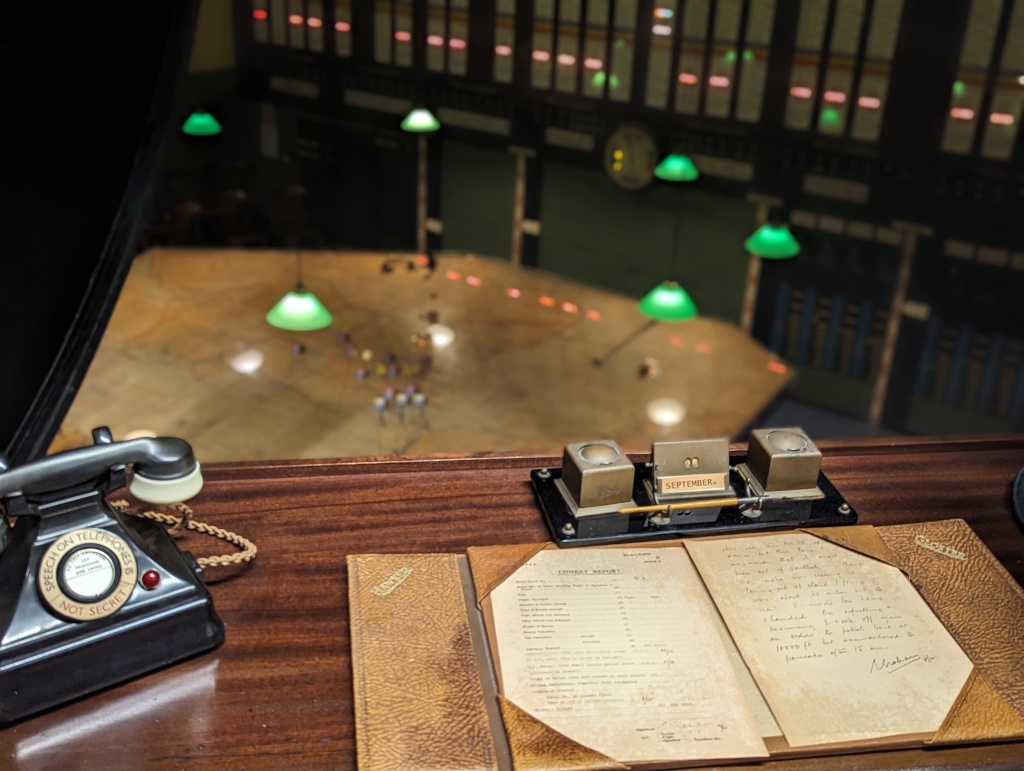
Certainly, I knew of this control center, but I didn’t realize it was in Uxbridge. It was fascinating to see it for myself, and to learn more about the famous “Dowding System” used for coordinating the air defenses. There was a moment when every squadron that was airworthy was engaged in repelling an especially large attack. Truly heroic. Later, when we stopped to talk with a gentleman handing out remembrance poppy pins for donations, we gladly handed over a note for two of them.
The next articles will be about the talks themselves, and the study of the new material we have.

When her kids were young, Mary lived in Haselmere, in Surrey. The special friendship which developed with these neighbors over 30 years ago still thrives today. I first met them when we were in the UK in 2018. We drove down to see them again this past week.

The sensation I experienced among our new friends in Uxbridge was repeated here–in the easy, genuine company of people we are blessed to have as our friends.

